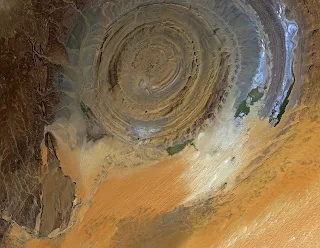La Tomatina is a festival that is held in the Valencian town of Buñol, a town located in the East of Spain 30 km / 19 miles from the Mediterranean, in which participants throw tomatoes and get involved in this tomato fight purely for entertainment purposes. Since 1945 it has been held on the last Wednesday of August, during the week of festivities of Buñol.
The festival is in honor of the town's patron saints, Luis Bertran and
the Mare de Deu dels Desemparats (Mother of God of the Defenseless), a
title of the Virgin Mary. The tomato fight (or La Tomatina) has been a strong tradition in Buñol since 1944 or 1945. No one is completely certain how this event originated, but there is one popular theory that disgruntled townspeople rioted and attacked city councilmen with tomatoes during a town celebration. Whatever did happen to begin the tradition, it was enjoyed so much that it was repeated the next year, and the year after that, and so on. Other theories include a food fight among friends, a juvenile class war between bare-footed Trotskyist macarras and upper class pijos from Madrid on summer vacation, a volley of tomatoes from bystanders at a carnival parade, a democratic protest against the city council and the ensuing aftermath of an accidental truck spillage. The holiday was banned in the Spanish State period under Francisco Franco for having no religious significance, but returned in the 1970s after his demise. In 1957, demand for the popular festival led to its becoming official, with certain rules and restrictions. These rules have gone through many modifications over the years.
Another important landmark in the history of this festival is the year 1975. From this year onward, "Los Clavarios de San Luis Bertrán" (San Luis Bertrán is the patron of the town of Buñol) organized the whole festival and brought in the tomatoes, which had previously been brought by the local people. Soon after this, in 1980, the town council took over responsibility for organizing the festival.
Since then, the number of participants has increased year after year. In 2002, in the month of August La Tomatina of Buñol was declared a Festivity of International Tourist Interest by the Secretary Department of Tourism due to its success. In 2013, town officials introduced an entry fee and limited the number of participants, citing concerns over safety.
Another important landmark in the history of this festival is the year 1975. From this year onward, "Los Clavarios de San Luis Bertrán" (San Luis Bertrán is the patron of the town of Buñol) organized the whole festival and brought in the tomatoes, which had previously been brought by the local people. Soon after this, in 1980, the town council took over responsibility for organizing the festival.
Since then, the number of participants has increased year after year. In 2002, in the month of August La Tomatina of Buñol was declared a Festivity of International Tourist Interest by the Secretary Department of Tourism due to its success. In 2013, town officials introduced an entry fee and limited the number of participants, citing concerns over safety.
At around 11am many trucks haul the bounty of tomatoes into the centre of the town, Plaza del Pueblo. The tomatoes come from Extremadura, where they are less expensive. Technically the festival does not begin until one brave soul has climbed to the top of a two-story high, greased-up wooden pole and reached the coveted ham at the top. In practice this process takes a long time and the festival starts despite no one reaching the meaty prize. The signal for the beginning of the fight is firing of water cannons, and the chaos begins. Once it begins, the battle is generally every man for himself.
After an one hour the fighting ends. At this point, no more tomatoes can be thrown. The cleaning process involves the use of fire trucks to spray down the streets, with water provided from a Roman aqueduct. The authorities seem more concerned with cleaning the town than cleaning the visitors, so some people find water at the Bunol River to wash themselves, although some kind residents will hose passers-by down. Once the tomato pulp is flushed, the ground is clean due to the acidity of the tomato.
After an one hour the fighting ends. At this point, no more tomatoes can be thrown. The cleaning process involves the use of fire trucks to spray down the streets, with water provided from a Roman aqueduct. The authorities seem more concerned with cleaning the town than cleaning the visitors, so some people find water at the Bunol River to wash themselves, although some kind residents will hose passers-by down. Once the tomato pulp is flushed, the ground is clean due to the acidity of the tomato.
Since 2013, the capacity of La Tomatina is regulated by selling tickets for the event, a measure that "guarantees the sustainability of the party, better security and fun for the attenders [sic]”. In 2015, it is estimated that almost 145000 kg of tomatoes were thrown. As with previous years, participants of many nationalities are expected.
The Rules of La Tomatina
- Do not bring bottles or hard objects as they can cause accidents.
- Do not rip other people's T-shirts
- You must squash the tomatoes before throwing them as this reduces the impact
- Ensure you keep a safe distance from the lorries
- As soon as you hear the second shot, you must stop throwing tomatoes


























































